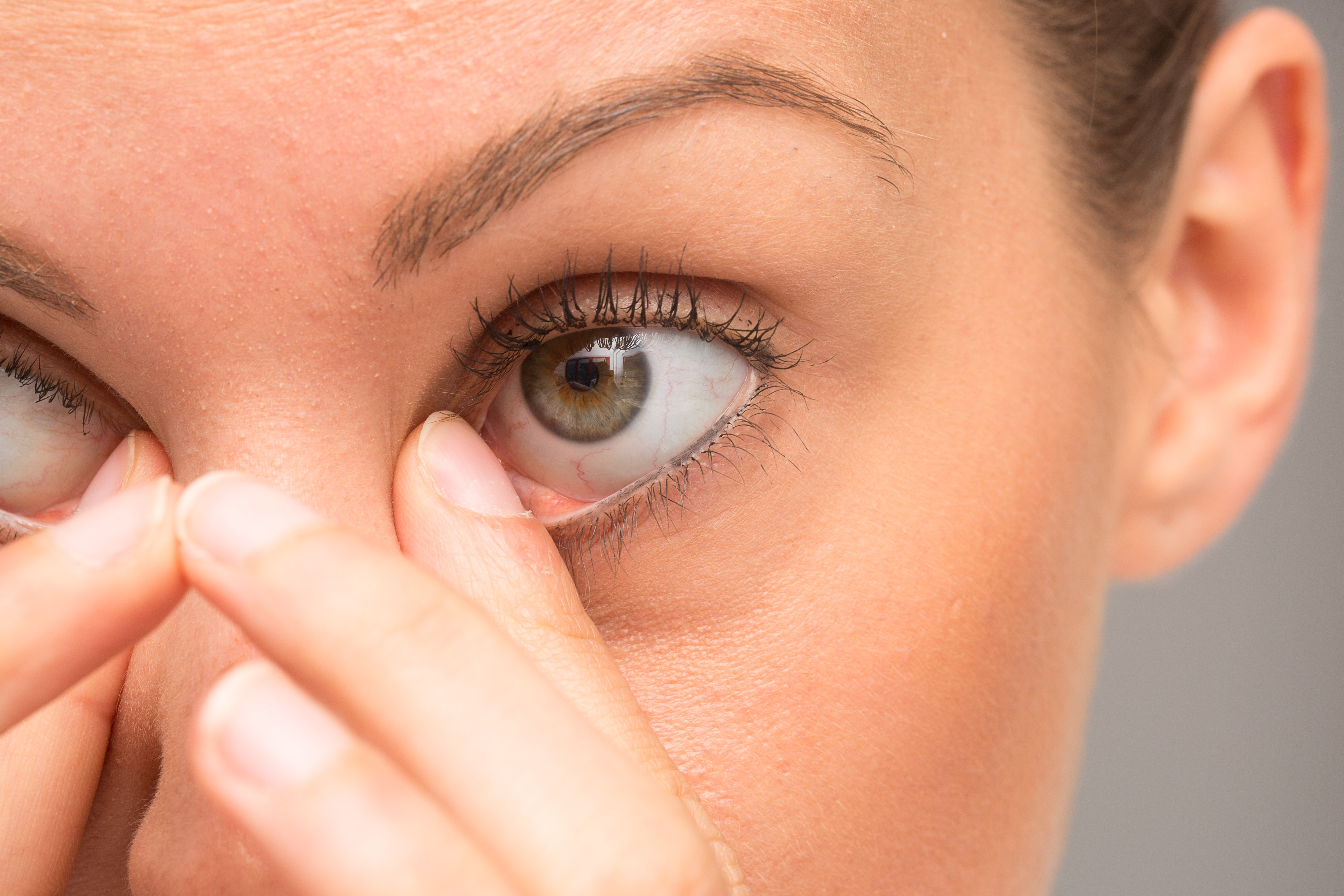
Eyes that constantly tear up can be quite uncomfortable.
Watery Eyes
Everyone has experienced watery eyes. It’s usually either the result of an annoying allergy or an emotional event, but sometimes the problem runs deeper than that. There are chronic problems some of us undergo that require further treatment than just over the counter eye drops or waiting for the sad movie to be over. Here are three fairly common afflictions that you may be facing if you can’t explain your watery eyes.
Dry Eye
Dry eye, as the name implies, happens when for one reason or another your eyes don’t produce enough tears. It can also be that your tears don’t have the correct balance of water, oil, and mucus causing them to evaporate too quickly. The result is an eye that is red, stings, feels gritty, and feels tired all of the time. Another symptom, strange as it sounds, is watery eyes. People who suffer from dry eye will have periods dry eyes, followed by an overabundance of tears instead of having a normal balance.
Dry eye can be caused by many different things, including thyroid disease, too much screen time, certain medicines, blepharitis (discussed later), and even the climate that you live in. However, it also comes naturally with aging, as you produce fewer tears as you age. The condition can be treated using a variety of treatments, such as prescription eye drops that use steroids for short term symptom relief, plugs in the eye’s drainage system to hold tears on the eye longer, and correcting the glands that produce oil if they are not producing enough.
Blepharitis
This ugly sounding condition causes the sufferer to have burning eyes, itchy eyelids, crusty eyelashes, and (you guessed it) watery eyes. While it may sound similar to dry eye, it is quite different. It occurs when the eyelid margin becomes inflamed due to infection from bacteria, fungi, or parasitic mites. It can also be caused by allergies or skin conditions like rosacea.
Blepharitis, if left untreated, can lead to a more serious corneal infection, chronic pink eye, and styes. The treatment typically consists of scrubbing the eyelids daily for a period of time at home, receiving some sort of specialized treatment to correct your oil producing glands, and a prescription eye medication.
Blocked Tear Duct
Remember how you can get plugs in your eyes to help stop tears from leaving too soon? The same can happen naturally in normally functioning eyes. This leads to an overabundance of tears, which can lead to complications such as infection and chronic inflammation. Other symptoms include redness, crusty eyelids, and blurry vision.
A tear duct can be blocked by anything from injury to radiation treatment from cancer. It is especially common for newborns, but can also be associated with aging. The disorder can be treated with special eye drops, manually unplugging the tear duct with a probe or stent, and surgery.
These problems all have very similar symptoms and can be difficult to tell apart. The only way to tell if you are experiencing one is to see an eye care professional. If you live near Hinsdale, Illinois, come visit us at Hinsdale Eye Center. Our professional and experienced staff are ready to help you regain control of your eye health, so contact us today!
